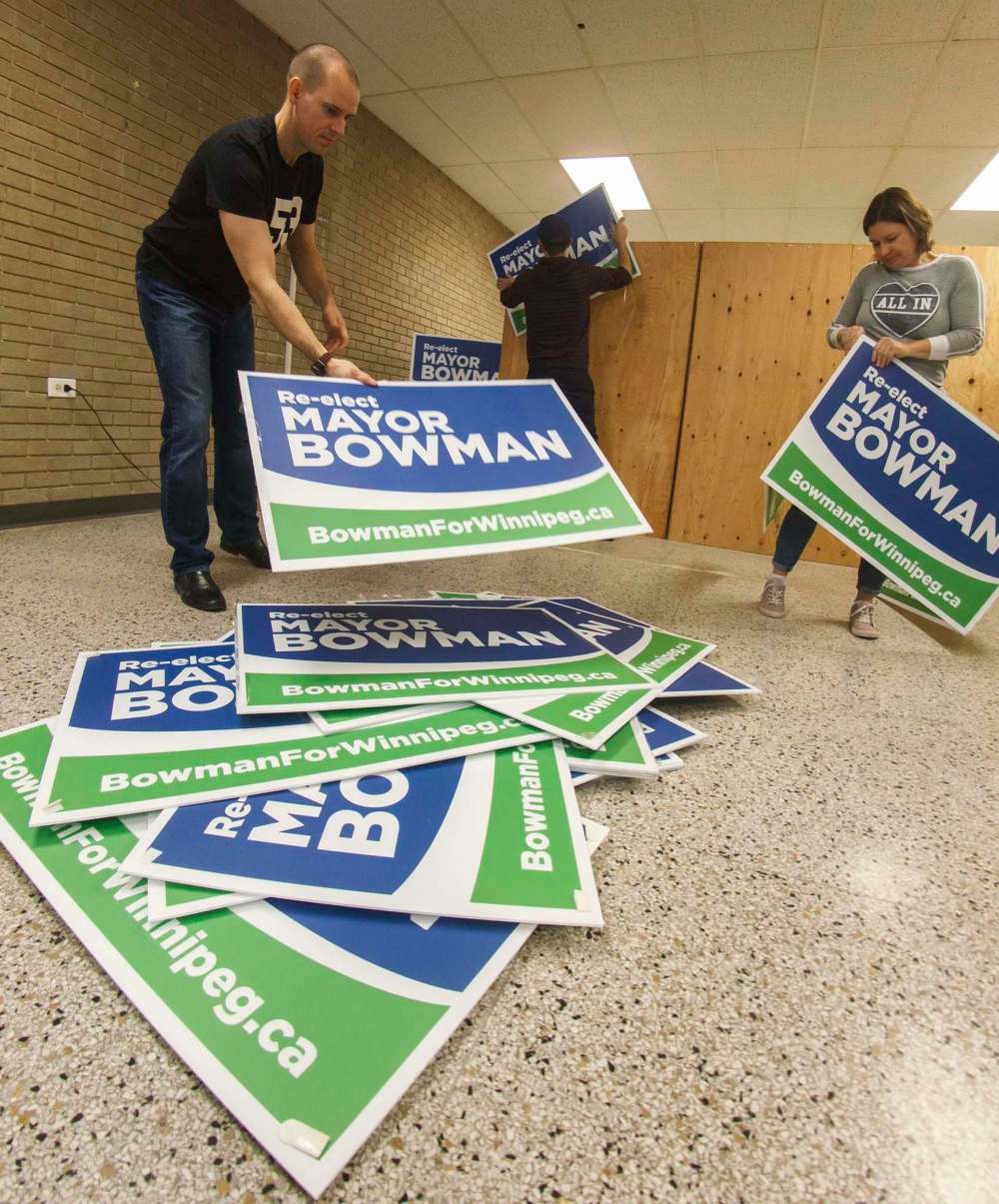Referendum, plenty of incumbents lead to ‘unfortunate’ decrease in voter turnout, Wednesday
Advertisement
Read this article for free:
or
Already have an account? Log in here »
To continue reading, please subscribe:
Monthly Digital Subscription
$0 for the first 4 weeks*
- Enjoy unlimited reading on winnipegfreepress.com
- Read the E-Edition, our digital replica newspaper
- Access News Break, our award-winning app
- Play interactive puzzles
*No charge for 4 weeks then price increases to the regular rate of $19.00 plus GST every four weeks. Offer available to new and qualified returning subscribers only. Cancel any time.
Monthly Digital Subscription
$4.75/week*
- Enjoy unlimited reading on winnipegfreepress.com
- Read the E-Edition, our digital replica newspaper
- Access News Break, our award-winning app
- Play interactive puzzles
*Billed as $19 plus GST every four weeks. Cancel any time.
To continue reading, please subscribe:
Add Free Press access to your Brandon Sun subscription for only an additional
$1 for the first 4 weeks*
*Your next subscription payment will increase by $1.00 and you will be charged $16.99 plus GST for four weeks. After four weeks, your payment will increase to $23.99 plus GST every four weeks.
Read unlimited articles for free today:
or
Already have an account? Log in here »
Hey there, time traveller!
This article was published 25/10/2018 (2606 days ago), so information in it may no longer be current.
A non-binding referendum on an intersection and a mayoral race some saw as foregone conclusions, along with a council field littered with incumbents, combined to create a perfect storm of voter apathy this municipal election.
Turnout for the 2018 Winnipeg civic election came in at 42 per cent, a decrease of eight percentage points – or 20,000 fewer votes – from 2014. It’s the lowest turnout the city has seen since 2006, when only 38 per cent of Winnipeggers hit a polling station.
“It was at the mark that I would have expected, given that an incumbent mayor was in place. Most people expected Brian Bowman would be re-elected. In a lot of ways that doesn’t really motivate people to turn up to vote,” said Shannon Sampert, a political science professor at the University of Winnipeg.

“That’s unfortunate, because there were some interesting races at the ward level. There were new councillors being voted in. It would have been nice to see the turnout go up for that.”
While engagement fell from 2014, the turnout was fairly consistent with other recent elections in large Canadian cities. Toronto and Ottawa, whose citizens went to the polls Oct. 22, had turnout rates of 41 and 42 per cent, respectively. Vancouver’s election on Oct. 20, meanwhile, had a turnout of 39 per cent.
Political engagement at the city level is traditionally tough to come by. Turnout rates come in lower for municipal elections than for their provincial and federal counterparts.
Paul Thomas, a professor emeritus at the University of Manitoba, thinks the lack of political parties at the municipal level plays a part in that. He also thinks some people just don’t consider municipal governments all that important.
“Some people are fairly dismissive of city governments. A lot of people take it for granted and then only get up on their feet and howl when something goes wrong,” Thomas said.
“In some sense there’s not much more we can do, except convince people that city government is important and that who leads city government is important.”
Sampert echoed Thomas’s comments, suggesting there are various ways the lack of formal party politics at the local level can play into voter disengagement.
“Parties also sometimes drive up voter turnout because people can say, ‘I don’t necessarily know who to vote for, but I always vote for this party.’ So, in a way, it’s easier to vote,” Sampert said.
When compared to Brandon, Winnipeg’s engagement was sky-high this election. Less than 17 per cent of residents in the Wheat City chose to participate in the democratic process.
One silver lining in Winnipeg, according to Sampert, is that advance voting was up this year, coming in at 39,500. That’s an increase of roughly 9,000 votes from 2014.
“That’s a really good sign. It’s a sign of success for the people who are organizing elections in the City of Winnipeg. We’ve seen a continuation of efforts to make access easier for those voters, by offering it shopping centres, grocery stores,” Sampert said.
In the lead up to the election, many thought the referendum on Portage and Main might motivate more votes. There are two reasons why Sampert thinks the exact opposite may have been the case.
Polling prior to the election seemed to show the vote on Portage and Main was a foregone conclusion, with a significant number of respondents suggesting they had no intention to vote in favour of re-opening it to foot traffic. The issue was also discussed endlessly, leaving many with “Portage and Main fatigue” by Oct. 24.
“Specific issues can lead to spikes in voting, but Portage and Main didn’t become that issue. I know some people felt that it took debates in the civic election away from some of the larger issues, it overshadowed them,” Sampert said.
“The polling that had come out also revealed that it was a lost cause. That can lead people to think, ‘What’s the point? It’s obvious what the outcome is going to be. I want to stay at home and watch the Jets.’”
ryan.thorpe@freepress.mb.ca
Twitter: @rk_thorpe

Ryan Thorpe likes the pace of daily news, the feeling of a broadsheet in his hands and the stress of never-ending deadlines hanging over his head.
Our newsroom depends on a growing audience of readers to power our journalism. If you are not a paid reader, please consider becoming a subscriber.
Our newsroom depends on its audience of readers to power our journalism. Thank you for your support.

